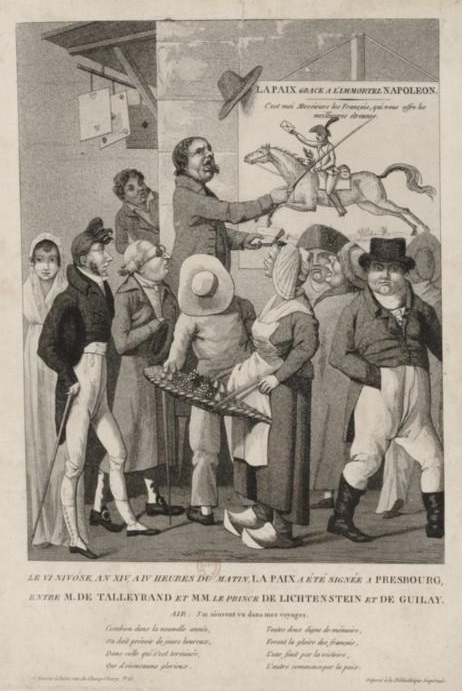|
Röthenbach (Allgäu)
Röthenbach (Allgäu) is a municipality in the administrative region of Swabia Lindau district and seat of the municipal association Röthenbach. Geography Röthenbach (Allgäu) is located in the Allgäu region. The municipality lies between the alps and Lake Constance. Treaty of Pressburg (1805) History Röthenbach was first mentioned in 866. At the foundation of the monastery of Mehrerau at the end of the 11th century, the town belonged to its property. Later Röthenbach (Allgäu) was part of the Austrian authority Bregenz-Hohenegg. Since the signing of the peace treaties of Brünn and Preßburg 1805 the town belongs to Bavaria. In the course of the administrative reforms in Bavaria the contemporary municipality was formed by the ''"Gemeindeedikt"'' of 1818. Demographics In the area of Röthenbach there were 1,491 inhabitants in 1970, 1,007 in 1987 and 1,722 inhabitants in 2000. Politics The mayor of Röthenbach is Stefan Höß (Freie Wähler). The revenue from the c ... [...More Info...] [...Related Items...] OR: [Wikipedia] [Google] [Baidu] |
Lindau (district)
Lindau is a ''Landkreis'' (district) in Swabia, Bavaria, Germany; its capital is the city of Lindau. It is bounded by (from the east and clockwise) the district of Oberallgäu, Austria (federal state of Vorarlberg), Lake Constance and the state of Baden-Württemberg (districts of Bodensee and Ravensburg). History The city of Lindau became a Free Imperial City in the 13th century; it was directly subordinate to the emperor. The rural areas around Lindau were the property of monasteries or tiny counties, that rose and fell in the region. When Napoleon gained influence in the area, all these entities were dissolved in the German Mediatisation. Lindau fell to Bavaria. The district of Lindau was established in 1938. After the Second World War it became — like the Rhenish Palatinate — part of the French zone of occupation, while the rest of Bavaria was under American occupation. In 1955 the district was reincorporated into Bavaria, unlike the Rhenish Palatinate. The city of Lindau ... [...More Info...] [...Related Items...] OR: [Wikipedia] [Google] [Baidu] |
Bayerisches Landesamt Für Statistik
The statistical offices of the German states (German language, German: ''Statistische Landesämter'') carry out the task of collecting official statistics in Germany together and in cooperation with the Federal Statistical Office of Germany, Federal Statistical Office. The implementation of statistics according to Article 83 of the Basic Law for the Federal Republic of Germany, constitution is executed at state level. The Bundestag, federal government has, under Article 73 (1) 11. of the constitution, the exclusive legislation for the "statistics for federal purposes." There are 14 statistical offices for the States of Germany, 16 states: See also * Federal Statistical Office of Germany References {{Reflist National statistical services, Germany Lists of organisations based in Germany, Statistical offices Official statistics, Germany ... [...More Info...] [...Related Items...] OR: [Wikipedia] [Google] [Baidu] |
Administrative Region
Administrative division, administrative unit,Article 3(1). country subdivision, administrative region, subnational entity, constituent state, as well as many similar terms, are generic names for geographical areas into which a particular, independent sovereign state (country) is divided. Such a unit usually has an administrative authority with the power to take administrative or policy decisions for its area. Usually, the countries have several levels of administrative divisions. The common names for the principal (largest) administrative divisions are: states (i.e. "subnational states", rather than sovereign states), provinces, lands, oblasts, governorates, cantons, prefectures, counties, regions, departments, and emirates. These, in turn, are often subdivided into smaller administrative units known by names such as circuits, counties, ''comarcas'', raions, '' județe'', or districts, which are further subdivided into the municipalities, communes or communities consti ... [...More Info...] [...Related Items...] OR: [Wikipedia] [Google] [Baidu] |
Swabia (administrative Region)
Swabia (german: Schwaben, ) is one of the seven administrative regions of Bavaria, Germany. Governance The county of Swabia is located in southwest Bavaria. It was annexed by Bavaria in 1803, is part of the historic region of Swabia and was formerly ruled by dukes of the Hohenstaufen dynasty. During the Nazi period, the area was separated from the rest of Bavaria to become the Gau Swabia. It was re-incorporated into Bavaria after the war. The Regierungsbezirk is subdivided into 3 regions (''Planungsregionen''): Allgäu, Augsburg, and Donau-Iller. Donau-Iller also includes two districts and one city of Baden-Württemberg. * Part of the Swabian Keuper Land Districts and district-free towns before the regional reorganization in 1972 Population Historical population of Swabia: *1939: 934,311 *1950: 1,293,734 *1961: 1,340,217 *1970: 1,467,454 *1987: 1,546,504 *2002: 1,776,465 *2005: 1,788,919 *2006: 1,786,764 *2008: 1,787,995 *2010: 1,785,875 *2015: 1,846,020 *2019: 1,89 ... [...More Info...] [...Related Items...] OR: [Wikipedia] [Google] [Baidu] |
Verwaltungsgemeinschaft
Municipal associations (german: Verwaltungsgemeinschaften) are statutory corporations or public bodies created by statute in the German federal states of Bavaria, Saxony, Thuringia, and Schleswig-Holstein. In Baden-Württemberg the term ''stipulated municipal association'' (german: vereinbarte Verwaltungsgemeinschaft) is used. Structure A municipal association normally consists of several adjacent municipalities located in the same district. It is controlled by a political representative, chairperson or executive board. Depending on the state, this person may be officially retained or appointed as mayor. * In Baden-Württemberg this position is held by the mayor of the appropriate fulfilling municipality (german: erfüllende Gemeinde). * In Thuringia there are municipal associations as well as fulfilling municipalities. * In Bavaria one mayor of a single municipality also acts as municipal chairman (german: Gemeinschaftsvorsitzender) of the association. Tasks The duties of ... [...More Info...] [...Related Items...] OR: [Wikipedia] [Google] [Baidu] |
Allgäu
The Allgäu (Standard German: , also Allgovia) is a region in Swabia in southern Germany. It covers the south of Bavarian Swabia, southeastern Baden-Württemberg, and parts of Austria. The region stretches from the pre-alpine lands up to the Alps. The main rivers flowing through the Allgäu are the Lech and Iller. Allgäu is not an administrative unit. The alpine regions of the Allgäu rise over 2,000 metres in elevation and are popular for winter skiing. The Allgovian area is notable for its beautiful landscapes and is popular for vacations and therapeutic stays.Its scenic countryside can be seen in Asmus, C. and Bufe, S. "Dampflokomotiven im Allgau" (1977, Hermann Merker). It is well known in Germany for its farm produce, especially dairy products including ''Hirtenkäse'' ("herdsman's cheese") and Bergkäse ("mountain cheese"). Besides tourism and dairy products, another important economic sector is the building of industrial equipment and machines. Fendt tractors, develop ... [...More Info...] [...Related Items...] OR: [Wikipedia] [Google] [Baidu] |
Lake Constance
Lake Constance (german: Bodensee, ) refers to three Body of water, bodies of water on the Rhine at the northern foot of the Alps: Upper Lake Constance (''Obersee''), Lower Lake Constance (''Untersee''), and a connecting stretch of the Rhine, called the Seerhein, Lake Rhine (''Seerhein''). These waterbodies lie within the Lake Constance Basin () in the Alpine Foreland through which the Rhine flows. The lake is situated where Germany, Switzerland, and Austria meet. Its shorelines lie in the German states of Baden-Württemberg and Bavaria, the Swiss cantons of Canton of St. Gallen, St. Gallen, Canton of Thurgau, Thurgau, and Canton of Schaffhausen, Schaffhausen, and the Austrian state of Vorarlberg. The actual location of the border Lake_Constance#International_borders, is disputed. The Alpine Rhine forms in its original course the Austro-Swiss border and flows into the lake from the south. The High Rhine flows westbound out of the lake and forms (with the exception of the Canton ... [...More Info...] [...Related Items...] OR: [Wikipedia] [Google] [Baidu] |
Wettingen-Mehrerau Abbey
Wettingen-Mehrerau Abbey is a Cistercian territorial abbey and cathedral located at Mehrerau on the outskirts of Bregenz in Vorarlberg, Austria. Wettingen-Mehrerau Abbey is directly subordinate to the Holy See and thus forms no part of the Catholic Archdiocese of Salzburg. The abbot of Wettingen-Mehrerau, however, is a member of the Austrian Bishops' Conference. The official name of the abbey is ''Beatae Mariae Virginis de Maris Stella et de Augia Majore'' ( la, Abbatia Territorialis Beatissimae Mariae Virginis Maris Stellae). Mehrerau Abbey The first monastery at Mehrerau was founded by Saint Columbanus who, after he was driven from Luxeuil, settled here about 611 and built a monastery after the model of Luxeuil. A monastery of nuns was soon established nearby. Little information survives on the history of either foundation up to 1079, when the monastery was reformed by the monk Gottfried, sent by abbot William of Hirsau, and the Rule of St. Benedict was introduced. (It is pr ... [...More Info...] [...Related Items...] OR: [Wikipedia] [Google] [Baidu] |
Treaty Of Pressburg (1805)
The Peace of Pressburg; french: Traité de Presbourg was signed in Pressburg (today Bratislava) on 26 December 1805 between French Emperor Napoleon Bonaparte and Holy Roman Emperor Francis II, as a consequence of the French victory over the Russians and Austrians at the Battle of Austerlitz (2 December). A truce was agreed on 4 December, and negotiations for the treaty began. The treaty was signed by Johann I Joseph, Prince of Liechtenstein, and the Hungarian Count Ignác Gyulay for the Austrian Empire and Charles Maurice de Talleyrand for France. Beyond the clauses establishing "peace and amity" and the Austrian withdrawal from the Third Coalition, the treaty also mandated substantial territorial concessions by the Austrian Empire. The French gains of the previous treaties of Campo Formio and Lunéville were reiterated, while recent Austrian acquisitions in Italy and southern Germany were ceded to France and Bavaria, respectively. The scattered Austrian holdings in Swabia were ... [...More Info...] [...Related Items...] OR: [Wikipedia] [Google] [Baidu] |
Freie Wähler
Free Voters (german: Freie Wähler, FW or FWG) in Germany may belong to an association of people which participates in an election without having the status of a registered political party. Usually it involves a locally organized group of voters in the form of a registered association (eV). In most cases, Free Voters campaign only at the local-government level, standing for city councils and for mayoralties. Free Voters tend to achieve their most successful electoral results in rural areas of southern Germany, appealing most to conservative voters who prefer local decisions to party politics. Free Voter groups are active in all German states. Unlike in the other German states, the Free Voters of Bavaria have also contested state elections since 1998. In the Bavaria state election of 2008 FW obtained 10.2% of the vote and gained their first 20 seats in the Landtag. FW may have been helped by the presence in its list of Gabriele Pauli, a former member of the Christian Social Uni ... [...More Info...] [...Related Items...] OR: [Wikipedia] [Google] [Baidu] |
Social Insurance
Social insurance is a form of Social protection, social welfare that provides insurance against economic risks. The insurance may be provided publicly or through the subsidizing of private insurance. In contrast to other forms of Welfare, social assistance, individuals' claims are partly dependent on their contributions, which can be considered insurance premiums to create a common fund out of which the individuals are then paid benefits in the future. Types of social insurance include: * Universal health care, Public health insurance * Social Security (United States), Social Security * Unemployment Insurance, Public Unemployment Insurance * Public auto insurance * Parental leave, Universal parental leave Features * The contributions of individuals is nominal and never goes beyond what they can afford * the Social welfare, benefits, eligibility requirements and other aspects of the program are defined by statute; * explicit provision is made to account for the income and exp ... [...More Info...] [...Related Items...] OR: [Wikipedia] [Google] [Baidu] |




